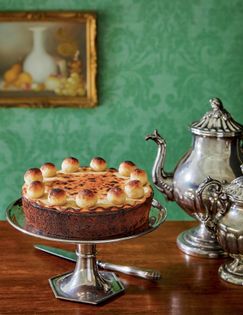Advertisement

Preparation info
- Serves
12–14
- Difficulty
Easy
Appears in
Published 2020
The name of this cake likely derives from the Latin simla, which was a flour grade available in ancient Rome used for making a yeast-leavened bread. By the Middle Ages, simnel cake was linked to the Easter holiday, and by the twentieth century, it had evolved into a light fruitcake accented with marzipan, both as a layer inside the cake and for decoration. In this regional adaptation, the cake is topped with a fluted marzipan round and eleven balls symbolizing the apostles of Jesus.<


